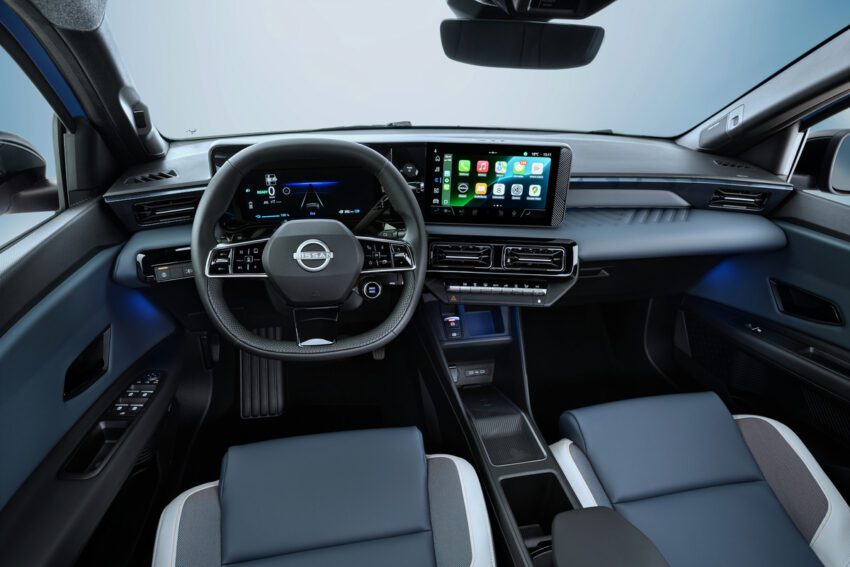
The Secret Life of Data Inside Your Electric Car
Every journey in a modern electric car is a quiet exchange of information. Beneath the silence of the motor, sensors track every detail such as acceleration, brake use, battery temperature, and even the tone of your driving.
This constant awareness means the car is no longer just a machine built to move; it has become a system built to understand. To do so, it relies on hundreds of sensors that can feed the car with up to 25 GB of information every hour, all necessary to translate each motion into insight that helps the system learn and respond.
This unseen intelligence based on real-time data powers personalization in many modern industries, from electric vehicles that learn driving habits to online casinos UK citizens can enjoy, which refine gameplay with their custom-made bonuses and promotions tailored to individual gaming styles. All are built on the same idea of turning live information into a highly individualized experience, a process that raises one clear question: where does all this data go, and who truly benefits from it?
Predictive Power – How Electric Cars Anticipate Problems
To understand where all that data goes, it helps to start inside the car itself. Before anything reaches external networks, most information is handled on board, where real analysis begins. A modern EV functions as its own mechanic, diagnosing potential issues long before they interrupt a journey. A dense network of sensors monitors how brakes wear, how the battery charges, and how the suspension reacts to different road conditions. During test phases, advanced models can produce between 11 and 152 terabytes of data each day, an immense stream processed largely inside the vehicle.
In practice this means that roughly 90 per cent of that information stays on board, 9 per cent moves through nearby edge systems, and just 1 per cent travels to the cloud. This internal hierarchy keeps responses fast which is a vital safeguard when a split second decision can prevent a malfunction.
At the same time, each diagnostic signal passes through strict government-defined security channels, as confirmed in the Vehicle Certification Agency’s guidance on cyber security and software updating which shows that the Agency requires every new model to maintain verified protection and update systems throughout its lifespan. These defences turn maintenance into a predictive science rather than a reactive one, saving owners both time and costly repairs.
The Navigation Network – Turning Millions of Trips Into Smarter Roads
The purpose of data collection also lies in how vehicles share what they record with wider transport systems that learn from every route and improve overall efficiency. Navigation data gives electric cars their collective intelligence. Every trip contributes to a larger map of movement as it feeds information about congestion, accidents, and road quality back into shared systems. Aggregated data, processed anonymously, helps networks adjust traffic flow in real time and can reduce travel times by as much as fifteen per cent.
Providers such as HERE build on these inputs to improve hazard detection and routing efficiency. The outcome benefits both drivers and cities because the information collected in motion turns into knowledge that prevents risk and saves time. Shared standards set by the United Nations Economic Commission for Europe keep the system coherent across borders, allowing UK networks to exchange information smoothly with European partners. This cooperation shows how vehicle data strengthens both individual journeys and the wider transport system.
Personalization on Wheels – Why Drivers Welcome Tailored Systems
Data collected on the road eventually finds its way back to the driver through familiar comforts such as remembered seat position, preferred routes, and charging stops that fit daily patterns. Personalisation feels valuable when the car predicts a heavy commute and proposes a quicker path or when the cabin temperature matches preference the moment the door opens.
Drivers may still question how much information makes that possible, yet most accept the exchange when it improves their experience. This balance is confirmed in research on the personalization–privacy paradox, which finds that consumers continue to value personalised experiences even while aware of privacy risks. What emerges is a quiet understanding that convenience has become the strongest argument for trust in connected technology.
Protecting the Stream – How Data Security Keeps Vehicles Trustworthy
Irrespective of its purpose, every byte of information travelling through an EV must be shielded from interference. International standards, particularly UNECE R155 and R156, define how manufacturers prevent cyber-attacks and control over-the-air updates. These frameworks ensure that software changes are verified, logged, and traceable throughout a car’s life.
In the UK, type-approval rules make compliance with these standards mandatory, reinforcing a system where every update has a secure origin and documented path. The Information Commissioner’s Office further clarifies that data created by connected vehicles falls within the scope of UK GDPR, meaning that drivers retain their personal rights even when technology operates autonomously.
Such layers of protection maintain public trust. They prove that while cars behave like computers on wheels, the networks governing them are far from uncontrolled because they remain monitored, audited, and reinforced to meet safety obligations.
The Value Chain – Why Data Has Become the New Mileage
By the time vehicle data moves through global networks and returns as insight, it has already created value far outside the dashboard. The global connected car market was valued at nearly $98 billion in 2024 and could exceed $422 billion by 2032 and the growth comes not only from the cars themselves but from the expanding ecosystem built around them: intelligent insurance that adjusts premiums to driving patterns, predictive charging that cuts energy waste, and shared analytics that help cities plan smoother transport routes.
Manufacturers and suppliers now treat information as a renewable asset. According to McKinsey, connected features generate about $310 in yearly revenue for carmakers and save another $180 through lower maintenance costs, improved diagnostics, and more precise resource planning. Each insight extracted from this flow of information strengthens competitiveness. In this new economy, data is no longer a by-product of driving; it is the mileage that measures progress.
What Drivers Should Remember
Every electric car is both a vehicle and a sensor network, collecting information that feeds constant improvement. Ownership now includes a quiet participation in this exchange, where data maintains safety, efficiency, and personal comfort.
Understanding what that data represents is part of being an informed driver. Behind each update and navigation tip lies a complex dialogue between machine intelligence and human need. This means that knowing what your car knows has become the newest form of driving awareness – a reminder that modern mobility runs on trust as much as on energy.





